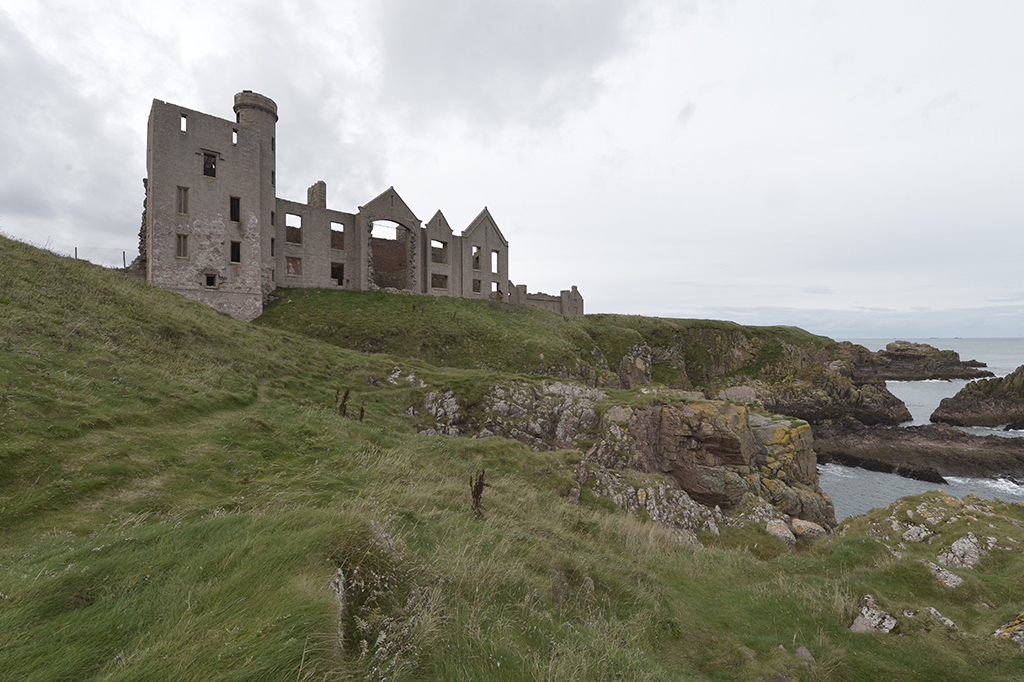
The scariest Scottish sites to visit at Halloween
Scotland is known for is ancient castles, with their accompanying ghost stories.
Scotland is arguably the home of Halloween – or Samhain as it was originally known. The celebration of all things spooky originates from the ancient Celts’ celebrations and is based on their ‘Feast of Samhain’. The eve became known as All Saints’ Eve, All Hallows’ Eve, or Hallowe’en.
Scotland’s Ghost Trail features a collection of places believed to be haunted by soldiers, sailors, pipers, dogs and even trains so visitors can enjoy some fright-seeing on their next trip to Scotland.
Malcolm Roughead, VisitScotland chief executive, said: ‘Scotland is THE place to be at Halloween with our atmospheric landscape, creepy castles, haunted historic houses, superstitions and bloody history. This time of year brings a huge tourism potential.
‘But ghosts are not just for Halloween – spirits are said to haunt these locations year-round so it is important for us to extend these festivities from one night only and capitalise on the public’s fascination with things that go bump in the night.’
As Halloween is nearly upon us, we present some of Scotland’s spookiest sites, courtesy of our friends at VisitScotland. You can also find their macabre map will be available to download at www.visitscotland.com/ghosttrail.

New Slains Castle is said to have inspired Dracula’s Castle
Slains Castle in Aberdeenshire is famous for providing inspiration for author Bram Stoker who visited the castle prior to beginning work on the immortal classic Dracula.
It is a large imposing ruin fronting directly onto south facing cliffs about a kilometre east of Cruden Bay. There are, confusingly, two Slains Castles on this stretch of coast.
The original lay a mile north east of Collieston and about six miles south west of its successor. This was built in the 1200s as a fortress, but not much remains of it today.
Witnessed ghosts at Slains Castle have included marching Second World War soldiers going past the Castle and a horse and carriage.
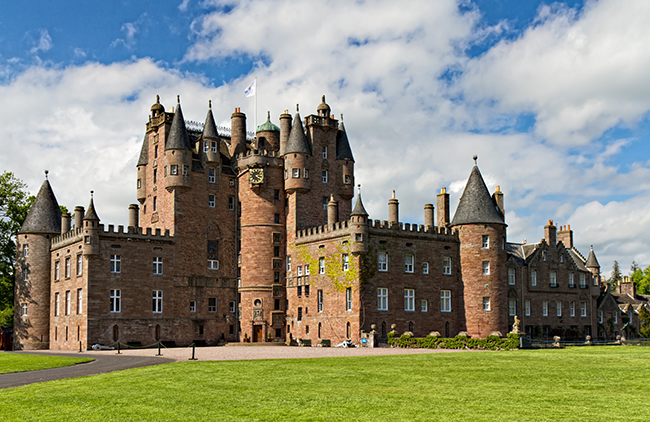
Spooky Glamis Castle
Glamis Castle in Angus has a long reputation as one of the most haunted castles in Scotland.
King Malcolm II was murdered here leaving a bloodstain on the floor, which defied all efforts to be removed, and eventually the floor was boarded over.
The castle is also said to contain secret rooms, one of which is believed to house a monster which roamed at night.
A ghost named the ‘Grey Lady’ is also said to haunt the Chapel.
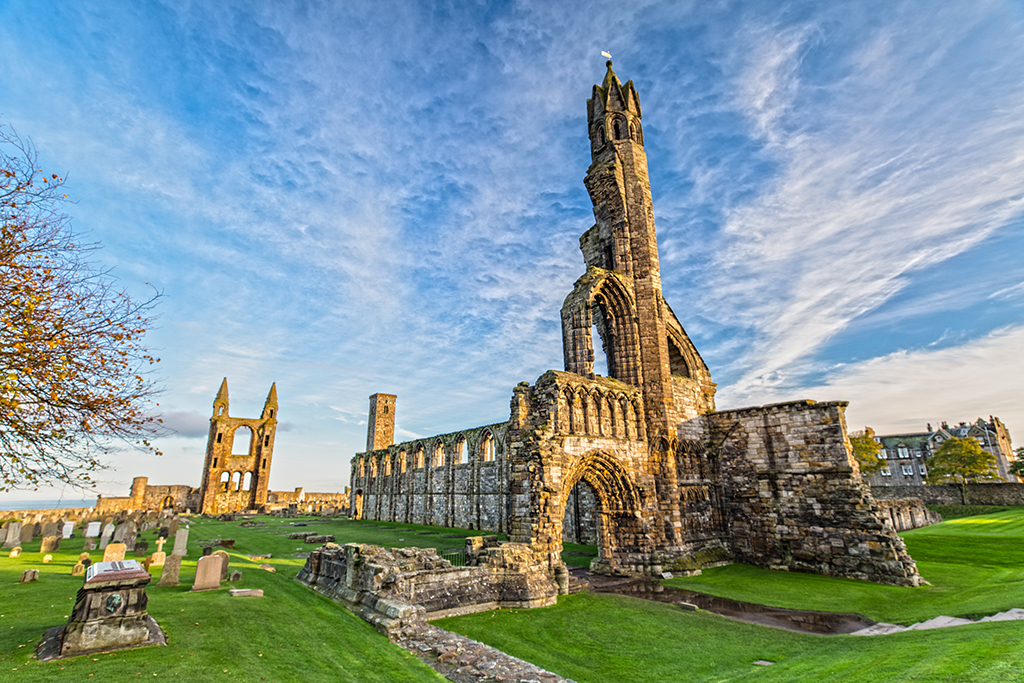
The ruins of St Andrews Cathedral
St Andrews is a historic seaside town in Fife steeped in legend, with stories of ghosts of murdered archbishops, John Knox and even the Devil himself wandering the streets!
The Cathedral ruins are said to be haunted by an unidentified lady in a long white dress with a veil, holding a book in her clasped hands.
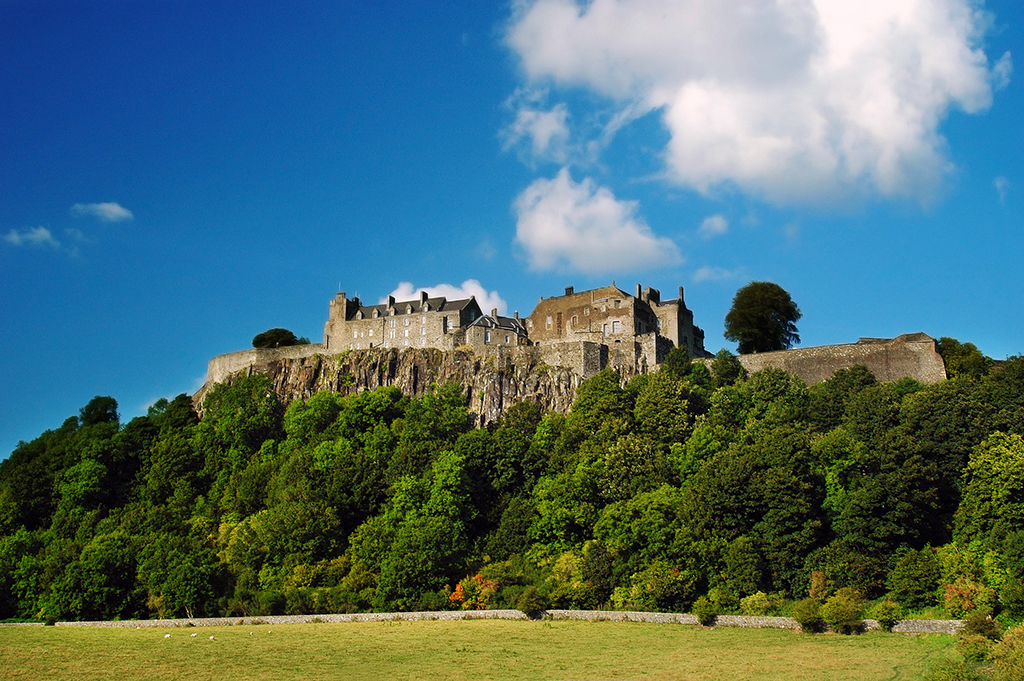
Stirling Castle
Stirling has its fair share of ghostly tales. The ‘Pink Lady’ is said to have been a noblewoman engaged to a brave knight who starved to death inside Stirling Castle during the Wars of Independence.
She in turn died, not from malnourishment but from the pain of a broken heart. Her spirit roams the castle awaiting the day their souls will be entwined once more.
The Stirling Ghost Walk tour offers drama and comedy on the city’s dark past. See www.stirlingghostwalk.com for more information.
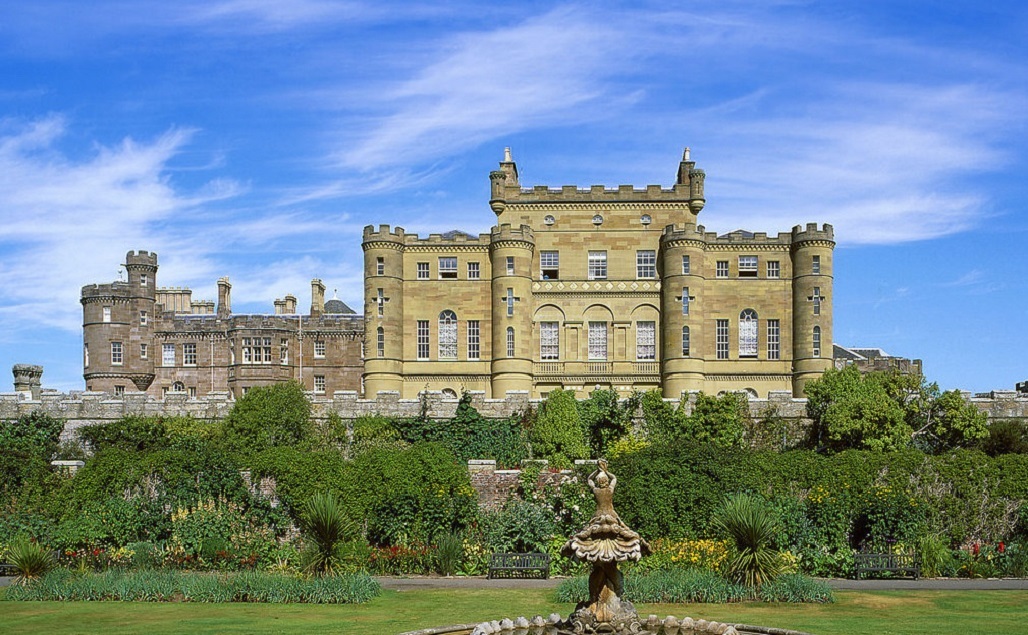
Culzean Castle & Country Park, Ayrshire
Culzean Castle in Ayrshire has a ghostly piper, who is reputed to have been searching caves beneath the castle when he disappeared. The pipes are said to herald the announcement of a marriage, and also to be heard on stormy nights.
His apparition is also said to have been seen in the grounds of the castle, both on Piper’s Brae and near the ruinous collegiate church.
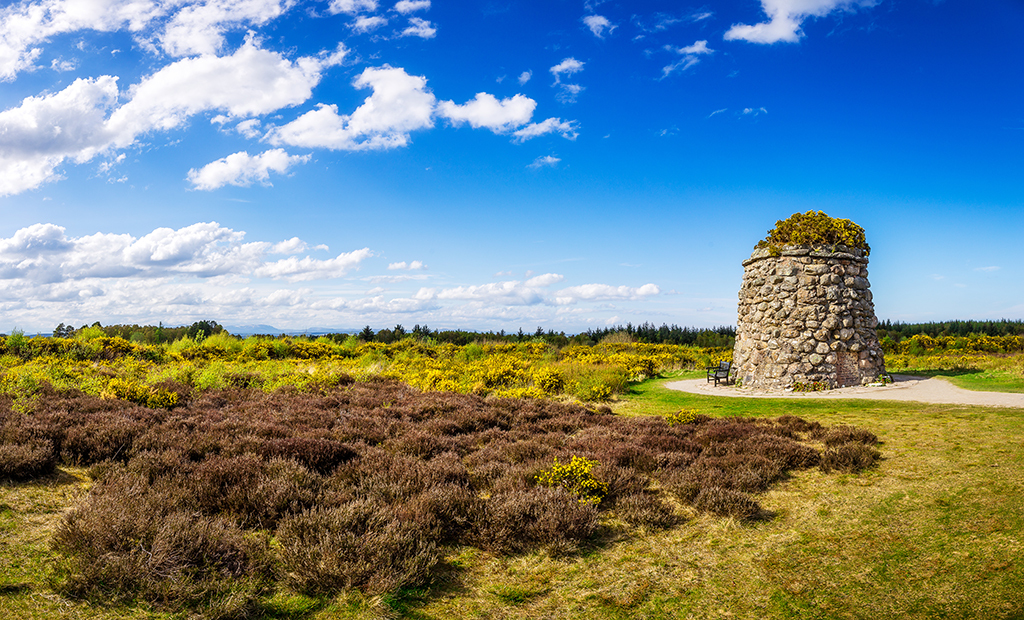
The memorial cairn at the battlefield of Culloden, near Inverness
Culloden Moor in Inverness-shire is the site of the tragic end to the Jacobite Rising of 1745. Bonnie Prince Charlie and 5000 Highlanders were defeated by The Duke of Cumberland and over 9000 Government troops just outside Inverness in the Highlands. Here, by the memorial cairn, there has often been seen the dim form of a battle-worn
Highlander.
Some years ago, a woman who was visiting Culloden chanced to look into the Well of the Dead and as she did so she saw the reflection of a Highlander looking back at her. This is only one of many reported sightings on the moor.
Here are some of our other spooky places to visit:
The Ghost Road, Dumfries & Galloway. Have you got the courage to drive along Scotland’s Ghost Road at night? The A75 through Dumfries & Galloway is reportedly one of Scotland’s most haunted, with sightings of strange creatures from screaming hags to ghostly horse and carriages.
Ubby of Skaill House, Orkney. Built on an ancient Norse burial ground, it’s no wonder Skaill House is described as a supernatural hotbed. The mansion’s most famous ghostly resident is Ubby, believed to have once been the man who built the small island in the nearby loch.
he Mackenzie Poltergeist, Edinburgh
Looming at the back of Greyfriars Kirkyard, the Black Mausoleum is one of the most feared structures in Edinburgh – many say with good reason. The tomb is said to be haunted by a particularly nasty poltergeist – thought to be the spirit of Sir George Mackenzie, the man who condemned many Covenanters to death in the 1600s. Visitors have reportedly collapsed, been grabbed by an unknown presence, had unexplained bruises appear on their bodies and many more dark occurrences.
The Headless Drummer, Edinburgh. As night settles or dawn draws in, the ghostly sound of drumming has been heard reverberating around the stone fortress of Edinburgh Castle. Legend has it that the sound is made by the Headless Drummer, and if his ghost ever appears in plain sight, it foretells disaster for the castle. The first time he appeared was in 1650 – the fateful year that Oliver Cromwell invaded Scotland and captured the castle, following a three-month siege.
The Phantom Piper, Dumfries & Galloway. Echoing out of a dark cave, on the jagged coastline at Clanyard Bay near Stranraer, the faint sound of the bagpipes has often reached the ears of nearby sailors. The source is said to be the Phantom Piper. In life, the piper is said to have invoked the fury of the cave’s resident fairies by entering with his loyal dog and playing his pipes in their domain. After the sound of his pipes had faded away, only his dog came tearing out alive, but without any of its hair.
The Green Lady of Crathes Castle, Aberdeenshire. Step inside the Green Lady’s room at Crathes Castle and feel the chill run down your spine. Said to be the ghost of a servant who fell pregnant out of wedlock, the Green Lady has been seen pacing back and forth from the fireplace, sometimes cradling an infant in her arms. A grisly discovery in the 1800s adds a sinister twist – the remains of a woman and child were uncovered beneath the hearthstone of the very same fireplace.
The Ghost Dog of Rosslyn, Midlothian. In a tale that spans centuries, Rosslyn’s phantom ghost dog is said to have been a war hound that was slain at the Battle of Roslin in 1303. After the battle, the ghostly apparition of the huge dog was seen by the resident soldiers, and the man who killed the dog’s owner died of terror within days. Nowadays, people sometimes speak of hearing a ghostly howling echoing from the woods that surround Rosslyn Castle’s ruins.
The Grey Train of Dunphail, Moray Speyside. Travelling along the now long-gone Dava Railway line, people have reportedly seen a fearsome ghost train charging along, blazing with light and hovering two feet above the tracks. Spotted in the 1920s and 1960s, there’s little explanation for the apparition, except for one story – 30 years earlier a train filled with cattle caught fire at Dava Station, killing the animals on board.
The Dead Sailors of Sandwood Bay, Sutherland. Although it’s one of Scotland’s most beautiful beaches, the waters off the coast of Sandwood Bay are treacherous and the area is known as a shipwreck graveyard. Before the lighthouse at Cape Wrath was built in 1828, many poor souls lost their lives here – perhaps explaining the stories of people seeing ghostly sailors on the beach and nearby.
The Ghosts of Clan Macdonald, Glen Coe. On the 13 February 1692, one of the most harrowing incidents in Scottish history took place. In the early hours of the morning, government soldiers – who were posing as friendly visitors – killed 38 men, women and children from the Macdonald of Glen Coe clan. Many others died from exposure after fleeing into the bitter cold. In recent times, people have reported hearing screams in Glen Coe or seeing re-enactments of the massacre, particularly around the anniversary.
The Phantom Harpist of Inveraray Castle, Argyll. If you hear the beautiful notes of a harp ringing out at in Inveraray Castle, it could be the castle’s ghostly harpist. Believed to have been the harpist of a former Duke of Argyll, the story goes that the young man was murdered by the Duke of Montrose when his men invaded old Inveraray Castle in 1644. Rooms he’s particularly associated with are the library and the MacArthur Room.
For more information on Halloween in Scotland, go to: www.visitscotland.com/halloween.
TAGS

